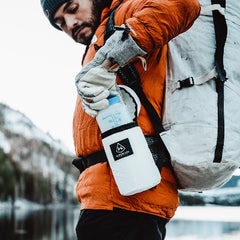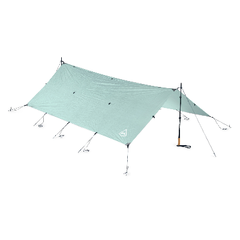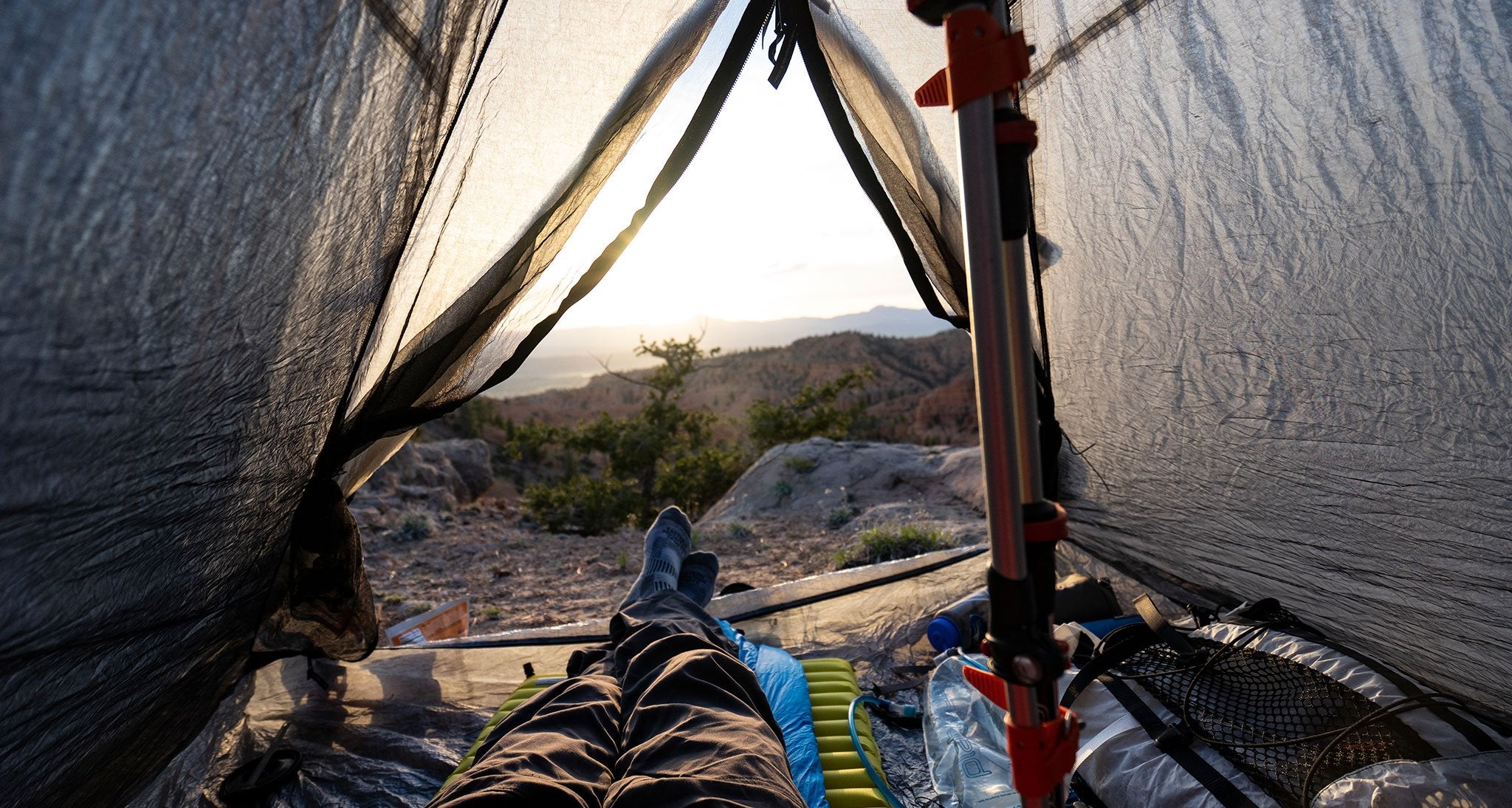Words by Annie MacWilliams // Photos by Brian Threlkeld
One of the biggest differences between mainstream brand backpacks and ultralight backpacks is the amount of bells and whistles. Removable brains, sleeping bag compartments, built in rain fly, and trekking pole carry straps might work for some people, but for a lot of backpackers, these features are over-designed and under-used, which in turn becomes unnecessary weight. Each extra zipper adds grams and another weak point for water to enter the pack, which is why a weather-resistant, roll-top style pack is the preferred design for a growing number of hikers. With only one entry point at the top, gear can be a little harder to organize but there are some tricks to make packing easier.

DEVELOP A SYSTEM
When you repack your backpack daily for five months, it helps to know exactly where everything belongs. If you need your med kit in an emergency, hear a bump in the night and need a light, or a storm sneaks up and you needed your raincoat 30 seconds ago, it helps if you don’t have to unpack everything to grab what you need. Also, a lot of gear manages to be left behind by hikers (always sweep your camp for gear, and garbage), but if you pack your bag the same way every day, you can reduce the chances of that happening. When using a thinly padded backpack without a burly frame system, it matters how you pack the interior. More solid objects (tent stakes, food bag lumps, stoves) can be felt through the back panels and cause discomfort, but if the backpack is padded internally with rain gear and extra clothing you’re already carrying, it adds to comfort without adding weight. Additionally, a well-packed backpack that’s flush with your hips and shoulders will help you balance better in uneven terrain, while allowing you to feel one with your pack, not battling it with each step.
CRITICIZE EVERY PIECE OF GEAR
It’s easy to get caught up in the newest technology, but sometimes it’s not the best thing for the job. While doing pack shakedowns I often ask “Why” someone is carrying an item. Hydration bladders are a common item you see inexperienced hikers using. In reality, they are a pain to refill on trail, as you often need to unpack half your pack to fill them, they get gunky without proper cleaning and drying, they can leak and fill the interior of your backpack with water, and possibly the worst part, you can’t gauge your water intake while using them which could lead to under hydration, or worse, let you run out of water too soon. A modest Gatorade bottle or Smartwater bottle is more durable, allows you to measure consumption, is easy to refill on the fly, and can be found in almost every gas station or small town store. Plus, it comes with a free drink inside! Treat every piece of gear this way and ask, “Is it the best thing for the job?” (For the record, I’m addicted to any hydration hose for biking, ski touring, and day hikes – I’m just not a fan of it on long hikes.)
PRACTICE
Packing your pack takes a lot of trial and error at first. Add a bear canister and it can get downright frustrating. The important thing is to try different tactics to find what works for you consistently. Do you want tent poles on the outside where they risk getting broken, or do you prefer to have them inside the pack? A lot comes down to personal preference. Pack, unpack, and repack until you feel like you’re ready and capable of doing this for the next 150 days in a row. And don’t forget anything!

ORGANIZATIONAL TOOLS
When using a single compartment pack, it helps to keep things on the inside organized. There’s nothing worse than having to empty your pack to find a knife that shifted to the bottom of a black hole. Stuff Sacks + Pods can help group items that belong together. In my pack, I use a stuff sack for a med kit, another for a ditty bag of odds and ends, a third as my food bag, a fourth for my sleeping bag and sacred sleeping clothes, and often a fifth for my air mattress as I want to ensure that it is not punctured. This system helps keep both my pack and tent space organized, and I don’t misplace items as easily. Pods are a versatile piece of the system as well. I use them at the bottom layer of my pack for gear not needed throughout the day and also to provide extra waterproofing for sleeping bags, puffy jackets, and any other gear that MUST stay dry. Pods also work great for re-packing wet gear like a tent or even right at the top of your pack for quick access to snacks or food throughout the day. The possible combinations of Stuff Sacks + Pods are endless, and finding the right balance for your specific needs and pack system is part of the fun!
Annie MacWilliams saw the world at 3.5 mph on the Appalachian Trail (’09), Pacific Crest Trail (’11), and Continental Divide Trail (’13). She considers the days of Tarzan-swinging kudzu vines, sunburn-soothing snow angels in the Sierra, gruff-ranchers-turned-hosts in the West, and intimately knowing the cycles of the natural world to be some of the best days spent of her life. She now spends her time in Park City, Utah walking slowly over short distances with a goofy dog, and up snowy mountains to slide down them. But every April she dreams of trail markers.




















